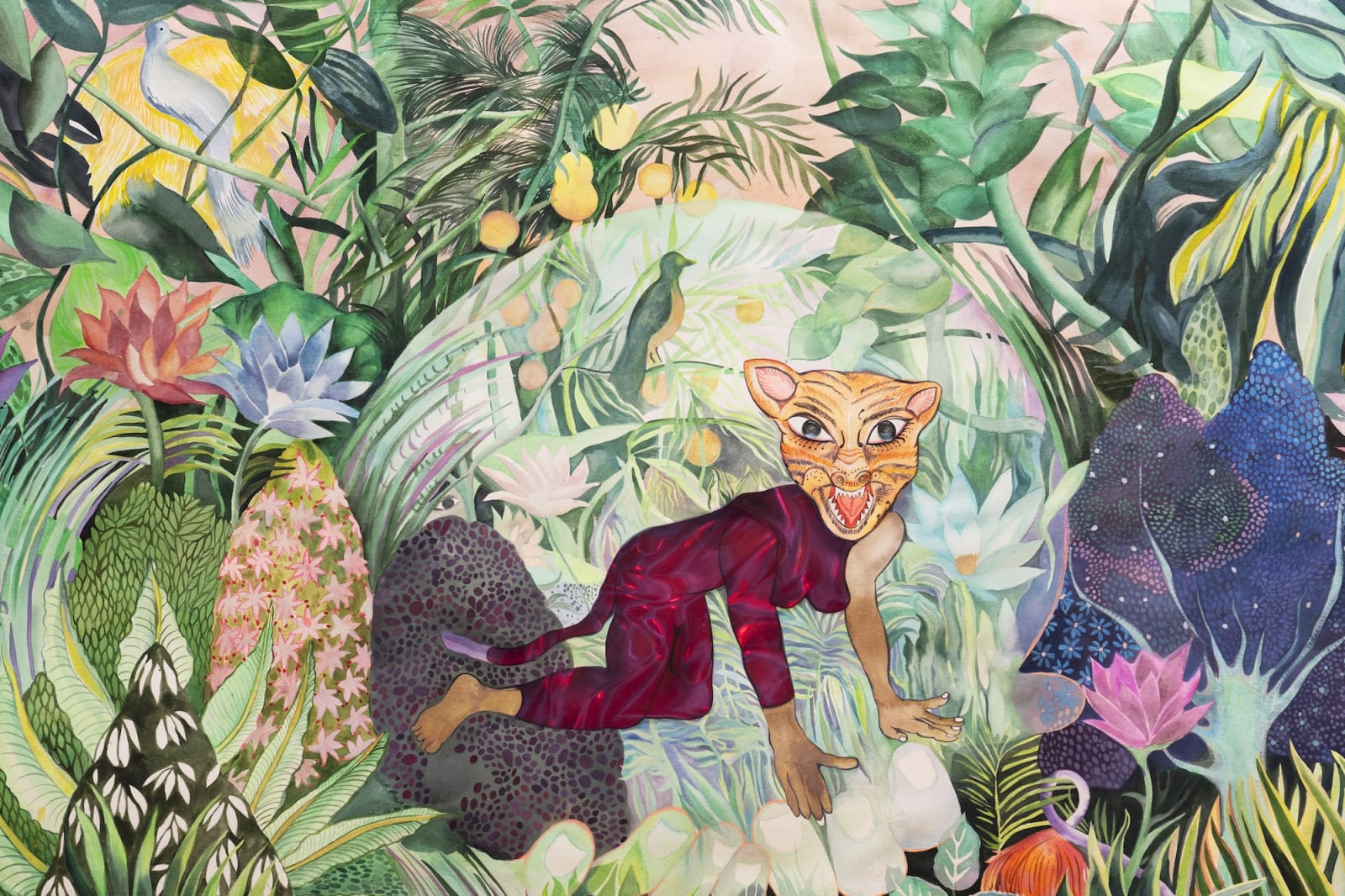October, 2024
A hybrid beast, a woman with a cat-like tail and tiger’s head, clad in a magenta jumpsuit, is poised on all fours in the middle of Chitra Ganesh’s large painting, Enter the Jungle (all works 2024). Enclosed in a shimmery orb, the tiger confronts the viewer, mouth open, mid-roar. Surrounded by lush tropical flora rendered in Ganesh’s botanic palette of shades of green, pink, and violet, the scene resembles the exotic jungle paintings of Henri Rousseau but with an uneasy undercurrent. Ganesh includes a single eye peering voyeuristically between the foliage behind this fantastic creature, while a pair of hands holds the orb up in the center of the image, presenting the tiger/woman as an object of curiosity. On the wall directly across from the entrance of the gallery and as the largest work on view; this painting sets the tone for Ganesh’s current exhibition, Tiger in the Looking Glass, on view at Wendi Norris. With 2024 marking the centennial of André Breton’s Manifesto of Surrealism, which called for liberation of the imagination in pursuit of a radically new worldview, these timely paintings show Ganesh deftly engaging Surrealist imaging strategies, locating femme hybrid figures and animals in fanciful settings.
A pair of paintings on a nearby wall echo the psychological disquiet in Enter the Jungle. In Tiger in the Looking Glass, Ganesh depicts a woman from behind, her long braid trailing down her back, positioning the viewer so that we peek over her shoulder to see what she sees in a handheld mirror: another roaring head of a tiger staring back at her. Roses in oranges and pinks fill the edges of the painting and encroach on the female figure, one tendril even covering her wrist. On a pale coral background with little definition aside from the florals, Ganesh’s painting has an eerie sense of space, resulting in a feeling that the flowers just might occlude the figure. Adjacent is Alien Abduction. Here, we are transported into a forested setting where beside a quickly moving stream a crouching, bestial figure with female features and flaming hair gazes up toward a pair of legs that disappear into a cloud. Mysterious lightning bolts shoot out from the base of the cloud and to the right of the legs, and pearl-like droplets descend from the figure’s toes. Despite witnessing this strange and disturbing scene, the bestial figure’s gaze is oddly neutral. In all three of these artworks, the uneasiness for me remains in the open question of whether Ganesh’s figures are meant to be viewed as protected and cared for—shielded by evil eyes as the bedazzled skater in Roller Disco—or reviled, as the woman/tiger in Enter the Jungle.






